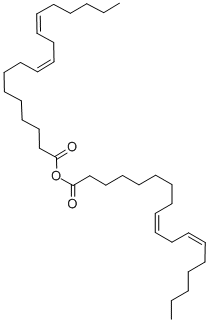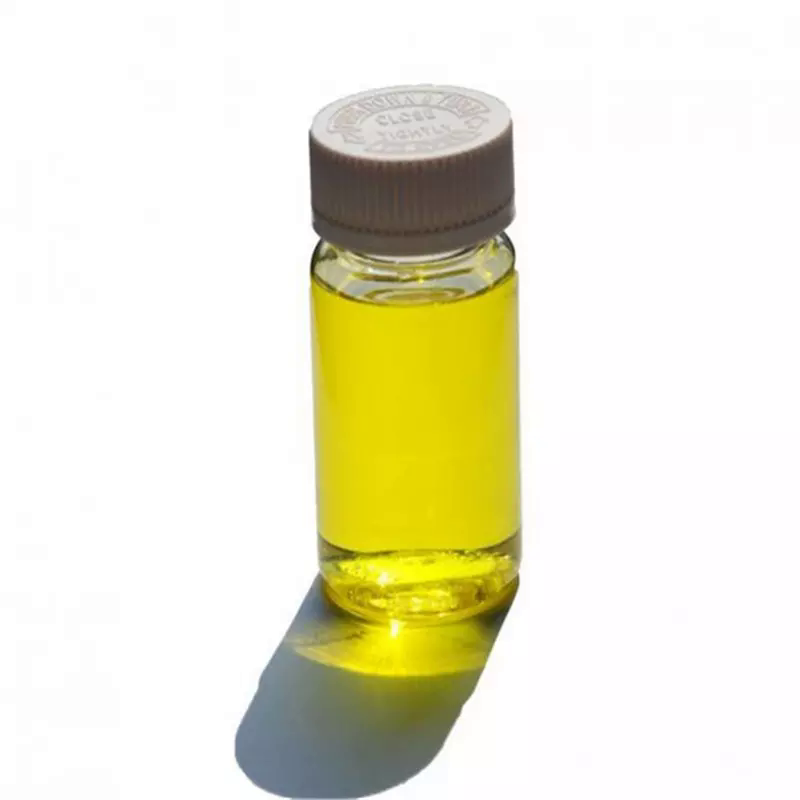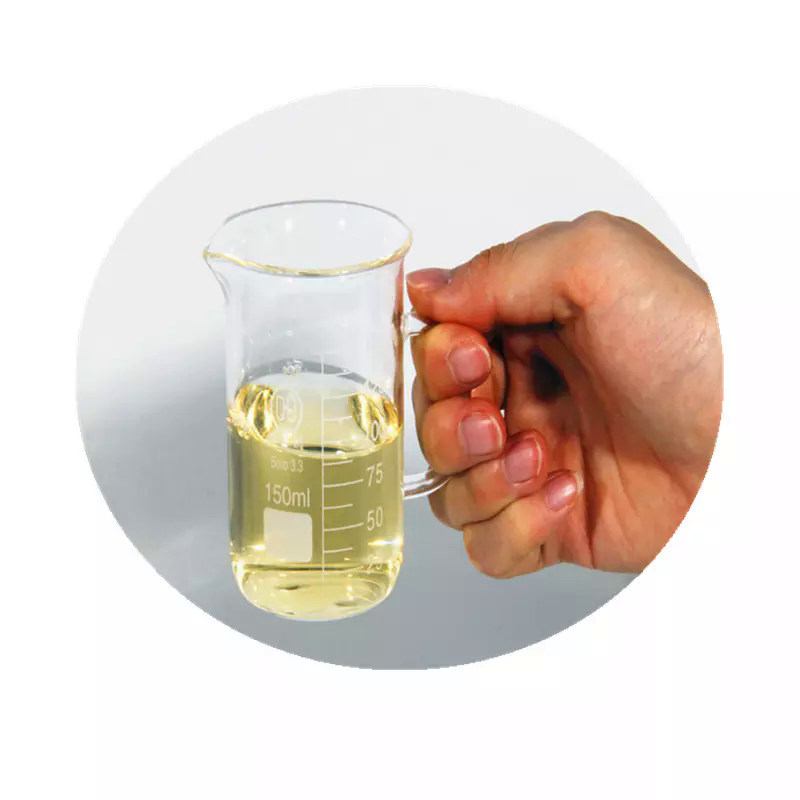VALERIC ANHYDRIDE
Synonym(s):Pentanoic anhydride
- CAS NO.:2082-59-9
- Empirical Formula: C10H18O3
- Molecular Weight: 186.25
- MDL number: MFCD00009477
- EINECS: 218-212-9
- SAFETY DATA SHEET (SDS)
- Update Date: 2024-12-18 14:08:52

What is VALERIC ANHYDRIDE?
Description
Valeric anhydride is an important organic synthetic raw material or intermediate component, often used in industrial or medical fields. It can be used in the preparation of butylphthalide, resin components, lutein esters, analgesics and organic glass.
Chemical properties
clear colorless to yellow liquid
The Uses of VALERIC ANHYDRIDE
Valeric anhydride can be used as a reactant to synthesize:
- Alkyl 9-nitrocamptothecin esters by the esterification reaction.
- Modified bismuth metal-organic frameworks (Bi-MOFs).
- O-acylated chitosan nanofibers (CSNFs) for potential usage in biomaterials and food packaging.
The Uses of VALERIC ANHYDRIDE
Valeric Anhydride is used in the synthesis of non-imadazole histamine H3-antagonists. Also used in the preparation of millepachine derivatives as a new class of tubulin polymerization inhibitors.
What are the applications of Application
Valeric anhydride is a synthesis reagent
Flammability and Explosibility
Non flammable
Properties of VALERIC ANHYDRIDE
| Melting point: | -56 °C (lit.) |
| Boiling point: | 228-230 °C (lit.) |
| Density | 0.944 g/mL at 20 °C (lit.) |
| vapor pressure | 5Pa at 25℃ |
| refractive index | n |
| Flash point: | 214 °F |
| storage temp. | Inert atmosphere,Room Temperature |
| solubility | Chloroform (Slightly), Methanol (Slightly) |
| form | Liquid |
| color | Clear colorless to yellow |
| BRN | 1770130 |
| CAS DataBase Reference | 2082-59-9(CAS DataBase Reference) |
| EPA Substance Registry System | Pentanoic acid, anhydride (2082-59-9) |
Safety information for VALERIC ANHYDRIDE
| Signal word | Danger |
| Pictogram(s) |
 Corrosion Corrosives GHS05 |
| GHS Hazard Statements |
H314:Skin corrosion/irritation |
| Precautionary Statement Codes |
P280:Wear protective gloves/protective clothing/eye protection/face protection. P363:Wash contaminated clothing before reuse. P303+P361+P353:IF ON SKIN (or hair): Remove/Take off Immediately all contaminated clothing. Rinse SKIN with water/shower. P305+P351+P338:IF IN EYES: Rinse cautiously with water for several minutes. Remove contact lenses, if present and easy to do. Continuerinsing. P405:Store locked up. |
Computed Descriptors for VALERIC ANHYDRIDE
| InChIKey | DUCKXCGALKOSJF-UHFFFAOYSA-N |
VALERIC ANHYDRIDE manufacturer
JSK Chemicals
2Y
Phone:+919879767970
Whatsapp: +91 9879767970
product: 2082-59-9 Valeric anhydride, 97% 99%
New Products
(S)-3-Aminobutanenitrile hydrochloride 4-Methylphenylacetic acid N-Boc-D-alaninol N-BOC-D/L-ALANINOL Tert-butyl bis(2-chloroethyl)carbamate 3-Morpholino-1-(4-nitrophenyl)-5,6-dihydropyridin- 2(1H)-one Furan-2,5-Dicarboxylic Acid Tropic acid 1-Bromo-3,5-Di-Tert-Butylbenzene S-2-CHLORO PROPIONIC ACID ETHYL ISOCYANOACETATE 2-Bromo-1,3-Bis(Dimethylamino)Trimethinium Hexafluorophosphate 4-IODO BENZOIC ACID 3-NITRO-2-METHYL ANILINE 1-(2,4-DICHLOROPHENYL) ETHANAMINE (2-Hydroxyphenyl)acetonitrile 4-Bromopyrazole 2-(Cyanocyclohexyl)acetic acid 4-methoxy-3,5-dinitropyridine 1-(4-(aminomethyl)benzyl)urea hydrochloride 2-aminopropyl benzoate hydrochloride diethyl 2-(2-((tertbutoxycarbonyl)amino) ethyl)malonate tert-butyl 4- (ureidomethyl)benzylcarbamate Ethyl-2-chloro((4-methoxyphenyl)hydrazono)acetateRelated products of tetrahydrofuran








You may like
-
 2082-59-9 Valeric anhydride, 97% 99%View Details
2082-59-9 Valeric anhydride, 97% 99%View Details
2082-59-9 -
 2082-59-9 98%View Details
2082-59-9 98%View Details
2082-59-9 -
 Valeric anhydride 95% CAS 2082-59-9View Details
Valeric anhydride 95% CAS 2082-59-9View Details
2082-59-9 -
 Valeric anhydride CAS 2082-59-9View Details
Valeric anhydride CAS 2082-59-9View Details
2082-59-9 -
 Valeric anhydride, 97% CAS 2082-59-9View Details
Valeric anhydride, 97% CAS 2082-59-9View Details
2082-59-9 -
 Valeric Anhydride CAS 2082-59-9View Details
Valeric Anhydride CAS 2082-59-9View Details
2082-59-9 -
 Valeric Anhydride Cas 2082 59 9 CAS 2082-59-9View Details
Valeric Anhydride Cas 2082 59 9 CAS 2082-59-9View Details
2082-59-9 -
 Valeric anhydride CAS 2082-59-9View Details
Valeric anhydride CAS 2082-59-9View Details
2082-59-9
Statement: All products displayed on this website are only used for non medical purposes such as industrial applications or scientific research, and cannot be used for clinical diagnosis or treatment of humans or animals. They are not medicinal or edible.